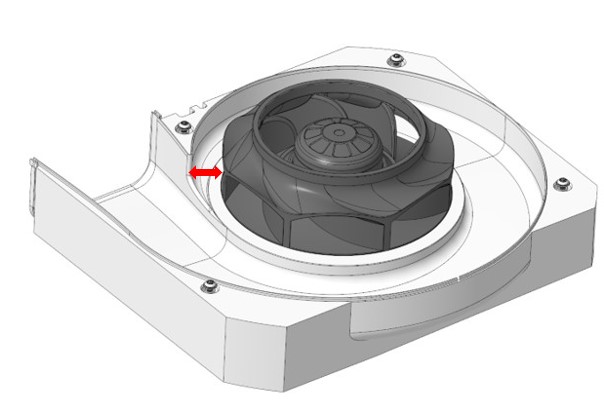Probleemstelling:
To fight climate change and to improve indoor comfort, the air tightness of buildings is improved as this reduces their energy use. In these buildings, mechanical ventilation systems with heat recuperation are crucial to bring fresh air inside. Typically, the air is circulated by a centrifugal fan. The most narrow gap between the rotor and the volute of the fan is called the tongue. Increasing this clearance will typically reduce the efficiency, especially when the flow rate is not perfectly matched with the volute, as there will be a pressure difference over the gap in those cases. On the other hand, a small clearance typically causes significant sound generation, as the jets and wakes of the rotor alternatingly impact on this tongue. Typically, this will result in sound with the blade passing frequency and its harmonics.

Figure 1: Centrifugal fan with volute for a domestic ventilation system.

Figure 2: Cross section of a centrifugal fan with indication of the tongue clearance in red.